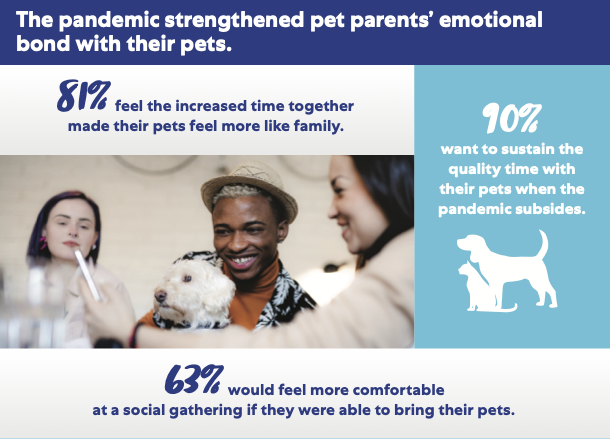Pet Homelessness Shouldn't Be Happening: Here's How Companies and Individuals Can Help
Words by 3p Editors
Originally published by TriplePundit
Despite Americans’ overall affection for pets, the reality is that at any given time nearly 48 million cats and dogs don’t have a home in the U.S. For years, workers and volunteers at animal shelters have faced an uphill battle as they selflessly combat pet homelessness.
At the forefront of this massive challenge is Dr. Ellen Jefferson, an animal welfare advocate, longtime pet shelter veterinarian, and president and CEO of the Texas animal shelter Austin Pets Alive.
TriplePundit spoke with Dr. Jefferson from her office in Austin to learn more about this ongoing problem and how individuals and companies can help to tackle pet homelessness. She also put to rest some common assumptions that many of us still hold about why countless dogs and cats cannot find safe and loving homes, and she speaks to new research from Mars Petcare, the world’s leading pet care company by revenue, about the state of pet homelessness globally and the role of private-sector partners in creating a world where all pets are wanted, cared for and welcome.
Homelessness is driven locally by gaps in funding and technology
The current model under which most animal shelters operate is based on an outdated approach that municipalities have long taken toward unwanted pets. For years, the emphasis has been on preventing the spread of diseases such as rabies. To that end, shelters were designed and run to contain animals until it came time for a common, and sad, outcome — pet euthanasia — as the vast majority of shelters are not staffed and resourced effectively to help these dogs and cats land in a new home.
“Only 0.2 percent of local government funding is going to animal shelters, and that’s a problem when community members believe that pets are part of their family,” Dr. Jefferson explained.
Yet the role shelters have within their local communities have needed to evolve with the times. “The problem with government shelters is that they are often thought as the bottom rung and the lowest priority of the safety nets within communities, so they are responsible for taking on problems that don’t get helped elsewhere,” Dr. Jefferson continued.
Further, shelters are now facing a far different reality. They are not merely tasked with warehousing stray animals. Due to the decades-long effort to spay and neuter pets across the U.S., the population of animals going into shelters is actually very low, Dr. Jefferson said.
“For every pet at an animal shelter, there’s an estimated eight people willing and ready to take them home,” she explained. “But the problem is that the industry hasn’t been able to modernize in order to meet demand. There’s no longer an ‘infestation,’ but there are hundreds of barriers we face in finding these pets a new home.”
Lack of information about the driving forces behind pet homelessness leaves many of those barriers unaddressed. “That myth of overpopulation is really pervasive. We need to debunk that mentality with data and tell policymakers that it’s no longer acceptable to act like this, and to provide the budget necessary so that shelters have the resources they need,” Dr. Jefferson continued. “We need to bring people together who are determined to solve these big social problems.”
How companies can lend resources to help pets and families find each other
The quest to secure more government funding may be long for animal shelters throughout the U.S., but Dr. Jefferson insisted that business can step in where policymakers are falling short. “Companies can help with innovation, entrepreneurism and commercializing the industry,” she told us.
In particular, firms in the technology sector can help animal shelters modernize through software and better serve their communities. Of course, not all shelters would be able to be part of such a huge change — after all, plenty of shelters are small operations staffed by one person who may not have a computer in the first place. Still, modernizing such systems would offer many shelters a fresh start and a new role in helping to strengthen communities, whether they reunite lost animals with their families or find new homes for homeless pets.
“We need to bring in human health software to help track individual pets,” Dr. Jefferson suggested. “It’s a similar concept to tracking a person through a hospital system, but we’re using shelter software that is built for jails, not built for hospitals.”
Yes, you read Dr. Jefferson right: Most shelters’ software is based on an incarceration model, not one focused on health or well-being. “The most common software package is the subset of a prison software – the bar is set by that one. It’s a space that hasn’t had innovation or competition, so when it comes to animals in shelters, we’re about 25 years behind,” she said.
One common result — and a tragic one at that — is pets that are picked up loose on the street (even those with homes) can be easily lost in the shelter system. “Fifty percent or more of the animals that are entering shelters don’t need to be there at all. The vast majority are within a block of home when they are picked up,” Dr. Jefferson told 3p. “But once an animal enters a shelter, and one often that is on the other side of town, their chances of being reclaimed drops to 10 percent.”
A step forward for tackling pet homelessness
Negative perceptions in some communities around adopting and fostering homeless pets are among the barriers to ensuring every pet has a loving home, which organizations like Mars Petcare are focused on addressing. The company provides resources for local governments and pet parents through its Better Cities For Pets program. It also donates pet food to shelters through its pet nutrition brands like Pedigree, Nutro, Iams, Sheba and Cesar, and holds regular adoption events — including its annual Adoption Weekend with Pedigree Foundation.
The company also recently released its first State of Pet Homelessness Index, research that measures and tracks the underlying causes leading to the abandoning of pets, thereby seeking to identify key problems that must be solved in order to address such challenges. Mars Petcare developed this work in partnership with animal welfare experts and organizations, resulting in an index comprised of quantitative research and data from more than 200 global and local sources to understand the issues and find the best answers possible.
As a starting point, the index focuses on nine countries across the globe, and the findings are staggering: In those nations alone, 224 million cats and dogs don’t have homes, and less than 10 percent of them are housed in shelters. The U.S. has an overall middling rating on the index — higher than countries such as Greece and Mexico, but lower than Germany and the U.K.
Leadership at Mars is hopeful that the data will inform and accelerate collective progress toward ending pet homelessness. “We’ve learned through our work over the last decade that this problem demands both global attention and local intervention,” said Ikdeep Singh, regional president of Mars Petcare. “Companies can start by understanding the issue in the communities where they operate and collaborating on solutions with local animal welfare organizations like Austin Pets Alive. We look forward to more people coming together to tackle pet homelessness.”
Dr. Jefferson is on the advisory board for Mars Petcare’s State of Pet Homelessness Index and said the study is crucial for anyone working within this space to understand the ongoing disconnect between the demand for pets and the millions of pets that need homes.
“The Index is a framework to understand what is happening, which has never been done before across the globe,” Dr. Jefferson said. “I’m excited to work with Mars and see this emphasis on a worldwide approach to end pet homelessness.”
This article series is sponsored by Mars and produced by the TriplePundit editorial team.
Image credits: Matt Nelson and Jonas Vincent via Unsplash




